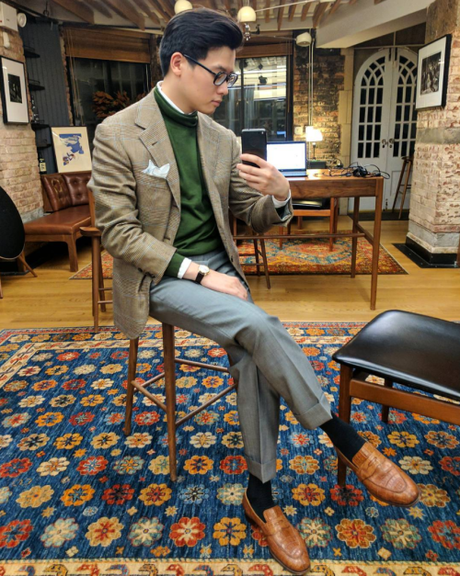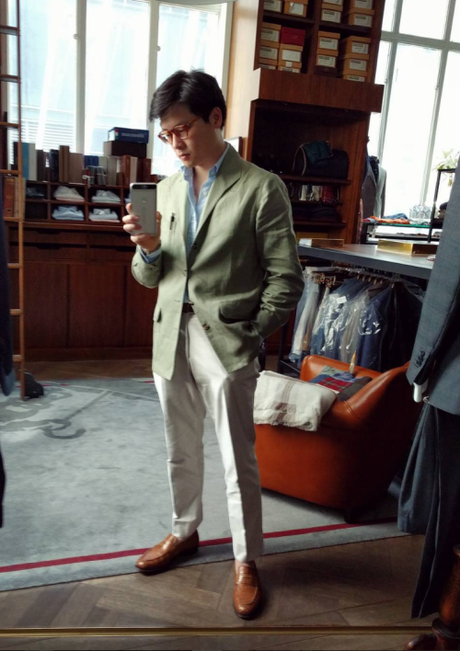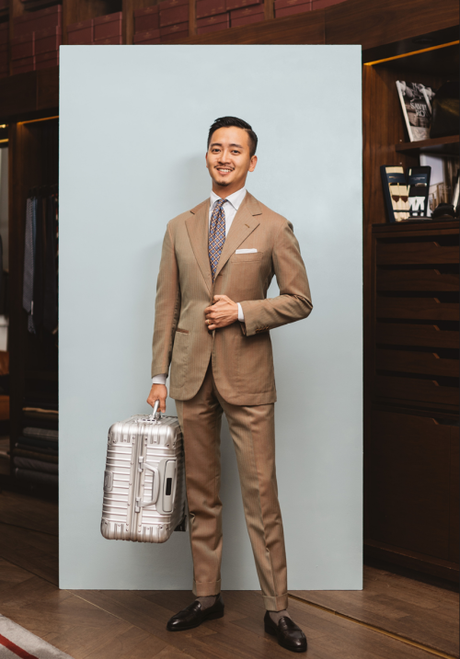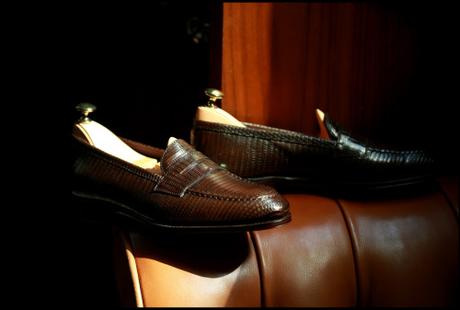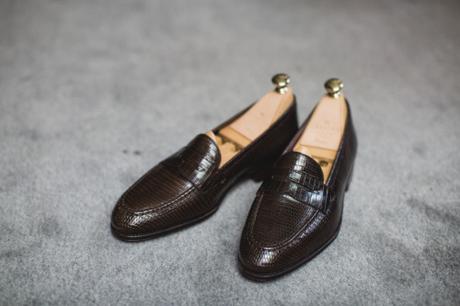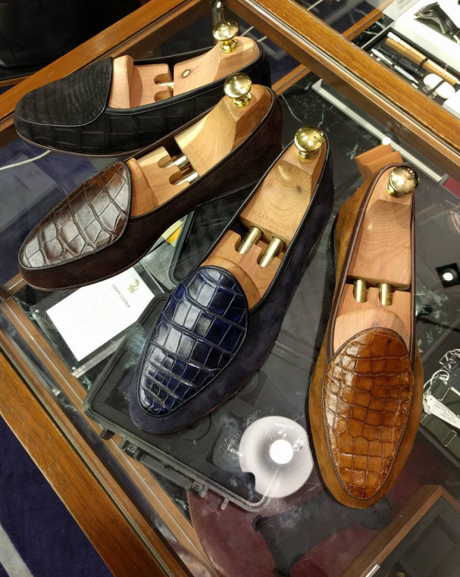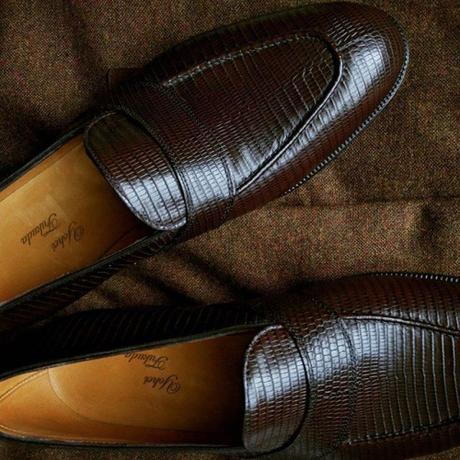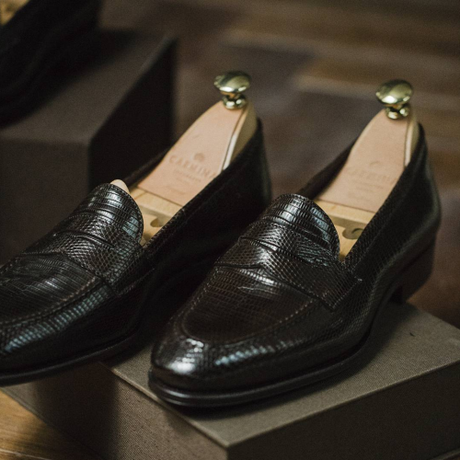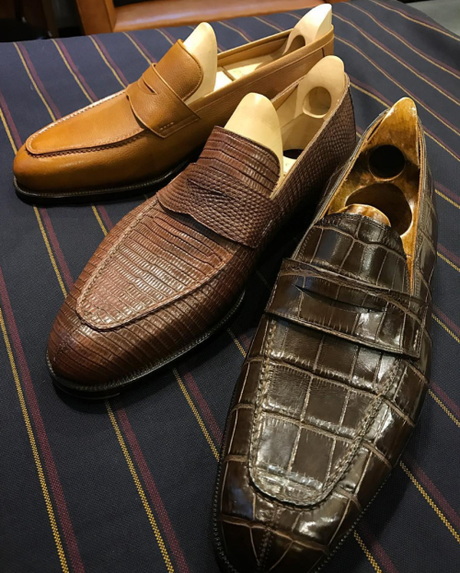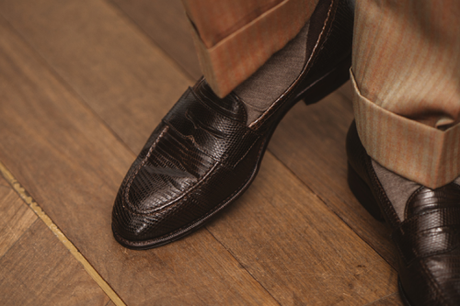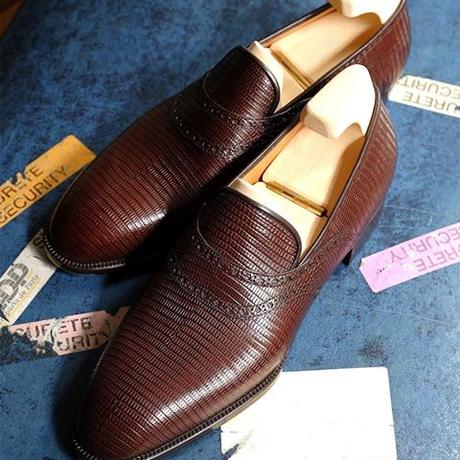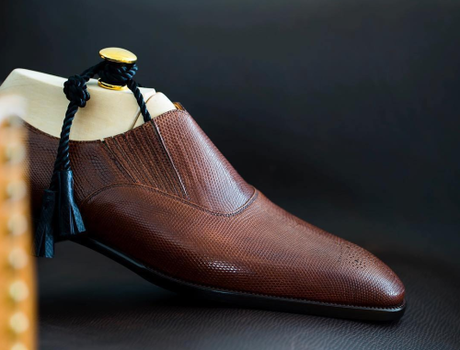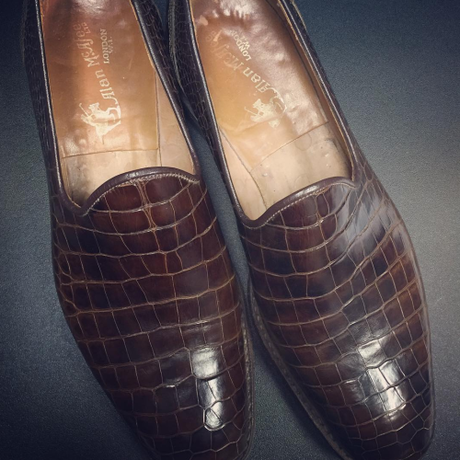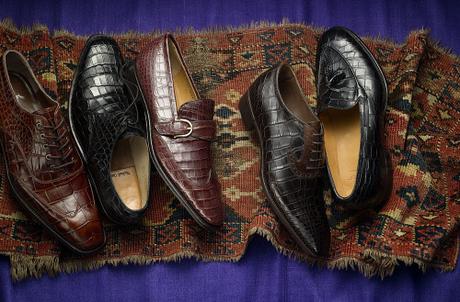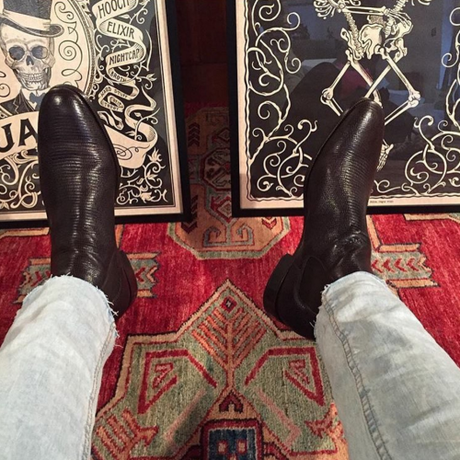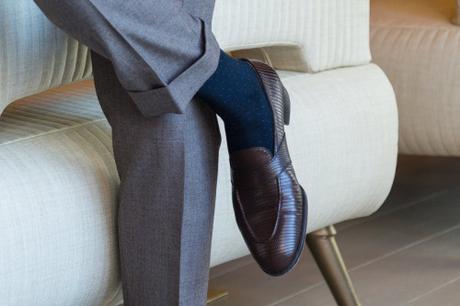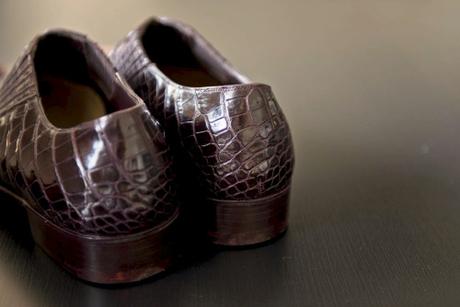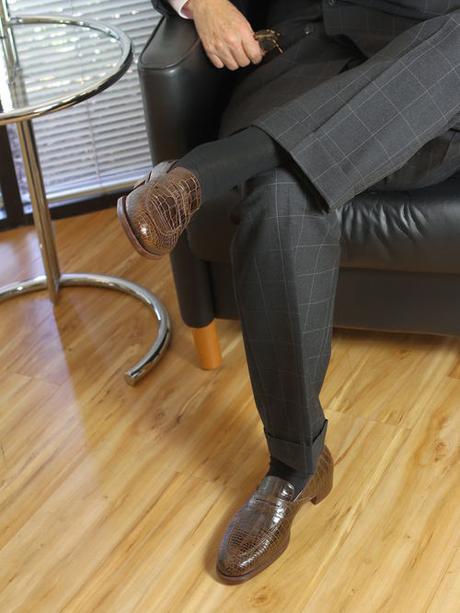
Far and away, the nicest pair of shoes I’ve seen were on Will Boehlke, the former writer and editor of A Suitable Wardrobe. Will was wearing them when I bumped into him five years ago at a hotel. He was coming out of a fitting and I was going into mine. As we passed, I noticed he was wearing some chocolate brown, glazed alligator penny loafers, which I later found out were specially made for him by George Cleverley. I never really considered exotic leather shoes up until then, but since seeing them, I’ve always wanted a similar pair for myself.
The problem with exotic shoes – particularly those made from alligator or crocodile – is you don’t know if you’ll like them until you try them. And prices here will range from the merely to the horribly expensive, as lower-end exotics aren’t usually worth buying. Anything affordable will be made from caiman, which is a small, Central American reptile that’s a close cousin of American alligator. Caiman leather is cheap, but it’s also not terribly great. Scaly, wrinkly, and tough, it starts off ugly and only gets worse with wear. Roje Exotics has a good video demonstrating the difference between quality crocodile skins and caiman.
If an affordable pair isn’t made from caiman, then it’s likely constructed from the less desirable parts of an alligator or crocodile hide – the tail or maybe the sides. What you want is a maker who will cut the uppers from the belly of the animal, as well as do some proper pattern matching, but doing so means fewer pairs of shoes can be squeezed from the hide. And thus we land back at the original price problem.
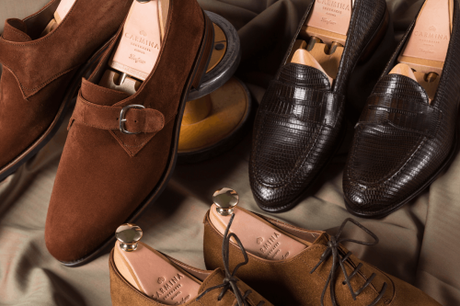
It’s probably a sign I have too many shoes, but I’ve been thinking about commissioning a pair of brown alligator loafers sometime next year. The nice thing about exotics is that they’re distinctive from your everyday calfskins, but remain more discrete than common leathers made in non-traditional colors (i.e. anything that’s not brown or black). Rolling Stones drummer Charlie Watts can be seen below in his GJ Cleverley exotics – one being a pair of black loafers with blue nubuck alligator lakes; the other brown ostrich slip-ons. They look nice on him, but they’re maybe a bit too dandy for me. I favor Armoury co-founder Mark Cho’s penny loafers more. Made by Koji Suzuki, the golden tan alligator here looks great with lighter colored sport coats.
To test the waters a bit, I recently bought a pair of dark brown, lizard skin Carmina loafers from The Armoury (pictured above). They look like they’re sold out at the moment, although I’m sure The Armoury can put in a special order (MTOs are easy through Carmina). I’ve been wearing mine with linen suits and checked sport coats. To be sure, they’re more eye catching than regular calfskins, but they also carry this 1980s Armani sensibility that I love. Dark brown lizard skin loafers look especially good, I think, with casual suits and thinner, one-inch wide belts. The Armoury’s other co-founder, Alan See, wore the same Carmina loafers with a tan Solaro suit in the company’s recent spring lookbook.
Some other good sources for exotics: any of the Northampton makers, who I find make more tasteful looking designs than their Italian counterparts (at least in exotics). See John Lobb or Edward Green. J.M. Weston, a French company, also offers exotic skins, including some handsome nubuck gators, for their iconic 180 loafer. For something more casual, Baudoin & Lange carries exotic Belgian-styled slip-ons, while Armando Cabral and Barbanera have rock-n-roll style boots in stamped calfskins. The last two aren’t technically exotic leathers, but they look close enough.


